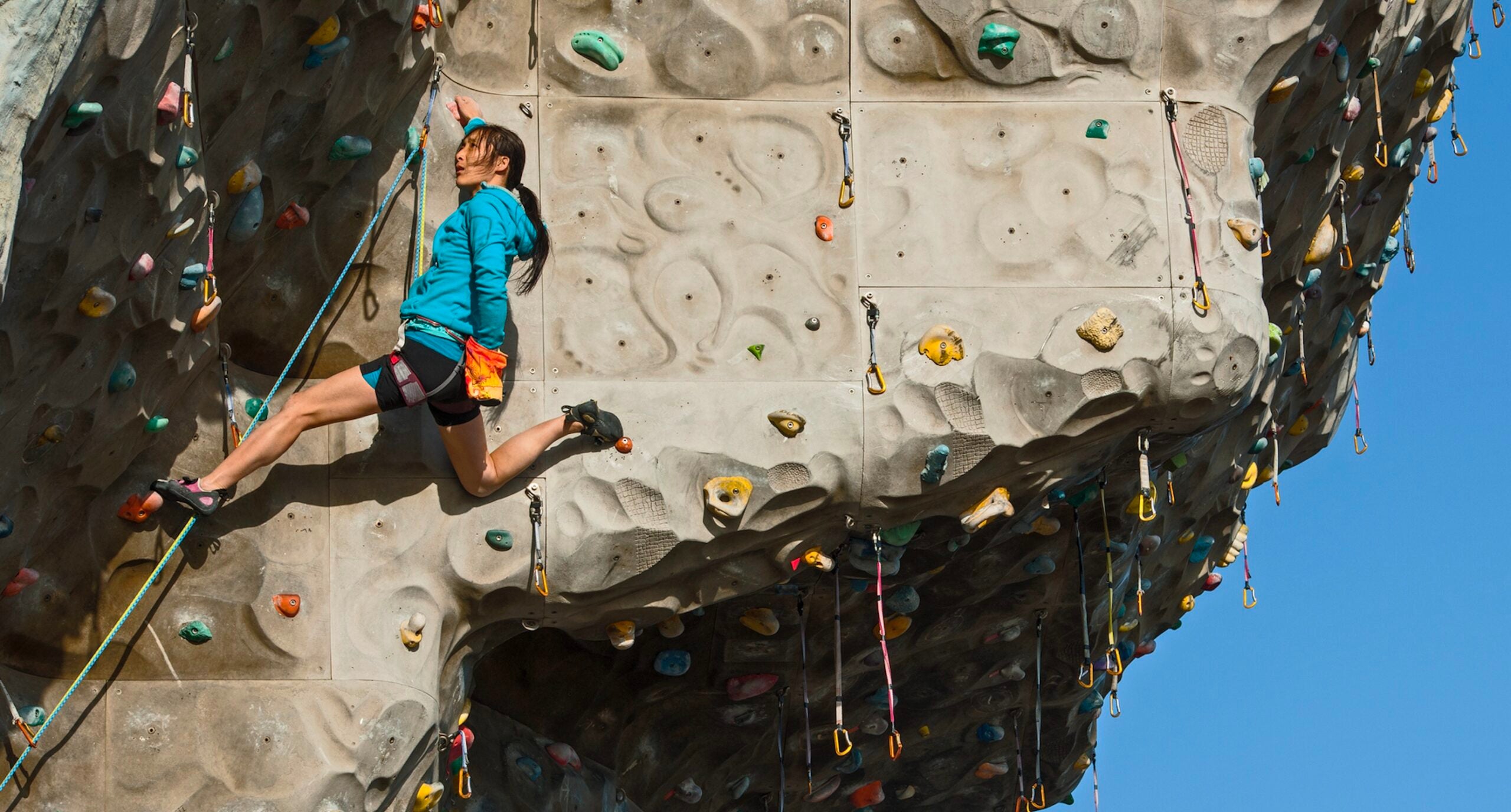Screw Yoga. If You Want to Climb Better, Take a Dance Class

Bodily awareness and flexibility, both key attributes of a seasoned climber, are also vital for dancers. (Photo: Henn Photography / Getty Images)
For years, yoga has been touted as the spirit-magic cure-all for climbing deficiencies. Does your body awareness suck? Try yoga. Are you bad at breathing? Yoga. Got the flexibility of an I-beam and the balance of a turnip? You guessed it: yoga.
The problem is that I hate yoga. I hate the Spandex, the hot people, the spiritual mumbo jumbo, the awkward poses—all of it. At least once a year, I read some new article hyping the benefits for climbers and I try again, thinking it’ll be different this time. I walk into the studio, with visions of myself doing the splits and circular breathing and gliding up the rock like a happy little Zen orangutan. Then, an hour later, I leave feeling pissed off with weird kinks in my back.
My more enlightened friends tell me that this just means I need more yoga. I tell them they’re wrong.
But then, in early 2022, I found myself coming off a particularly draining ice-climbing competition season. It was my first year competing on the European Cup circuit, and I performed dismally. Then, the World Cup series got canceled thanks to a one-two punch of COVID and war (Russia, which invaded Ukraine in late February, was slated to host at least two events).
By March, I was tired, burnt out, and my climbing progress had stalled. I knew the plateau had more to do with technique than strength. Sure, I could always hangboard more, but that paled in comparison to my total lack of body awareness and complete ignorance about where my hips were in space at any given time. If I wanted to break my plateau, I needed to address those things first. I needed to try something new.
Yoga, of course, was out. I figured there had to be something else—something that didn’t involve groveling around on the floor next to half-naked strangers. Something that could teach me some sense of rhythm, and how to move my body in space.
Then I stumbled upon a video of Adam Ondra doing ballet. Of course. I thought. I’ll try a dance class.
Ballet sounded lame—and I had a feeling my giant arms wouldn’t look good in a leotard—so I started examining other options. Break dancing looked cool, but I reminded myself that I was trying to get out of my comfort zone. (As I’d learned from bouldering, I was already pretty good at flinging myself repeatedly at the floor.) I needed something subtler. So, I settled on the subtlest, most foreign style of dance I could think of.
I signed up for belly dancing.
For the uninitiated, belly dancing is all about moving your hips, belly, rib cage, and shoulders entirely independently of one another. It’s weird and subtle and stupid, and it’s the hardest thing I’ve ever done.
After my first class I almost cried. After my second I almost quit. After my fourth, the teacher held me after class to explain to me how music works. But, despite it all, I found I had started to kind of enjoy myself. It was fun to try something new. And it was fun to be so bad at something that I had no choice but to laugh at myself. Amid all the seriousness of competition, that was a skill I’d lost.
So, I kept going. Then I went to a swing dancing class. I tried aerial hoop (painful), and aerial silks (slightly less painful). After a couple of months of dabbling around, something started to click. I learned to point my toes and stop hunching my shoulders. I learned to flourish my hands without looking like I was clawing for air.

Then, in May, I went on a climbing trip to Indian Creek. That’s when I noticed something was different.
For the first time, I felt like I knew exactly where my body was in space—what my toes were doing while I was occupied with tricky ring locks, or how my core was engaged when switching corners. I was able to find a rhythm, both in my breath and in my movements. For the first time, I felt…graceful.
The more I danced, the more improvement I saw. In the gym, I was suddenly able to troubleshoot my own bouldering fails instead of asking friends to do it for me. I started unlocking sequences faster than I had been able to before.
I’m sure part of the credit goes to the physical benefits of dance. After all, NFL players have turned to ballet for years to hone their flexibility, balance, and timing. Others claim that dance’s lateral movements help boost injury resilience in the knees and ankles. But for me dance’s benefits were mainly psychological.
I had always been strong and flexible enough to be basically good at yoga. Dancing was another story. By forcing myself way out of my comfort zone, I finally started to get better at failing. I started to approach my botched attempts with curiosity instead of judgment and frustration. (That could be one reason why dance is so effective for reducing anxiety, as well as boosting memory and cognitive function.) And unlike yoga, which is pretty slow and serious a lot of the time, dancing is about celebration. It’s the physical expression of joy. I had forgotten that I used to feel that way about climbing, too. Dancing helped me remember.
Of course, dance won’t fix all your climbing problems any more than any other single method of cross-training will. But, in my experience, it’s been an incredible way to drastically improve my movement skills—and learn to have fun again. And, well, it sure beats yoga.